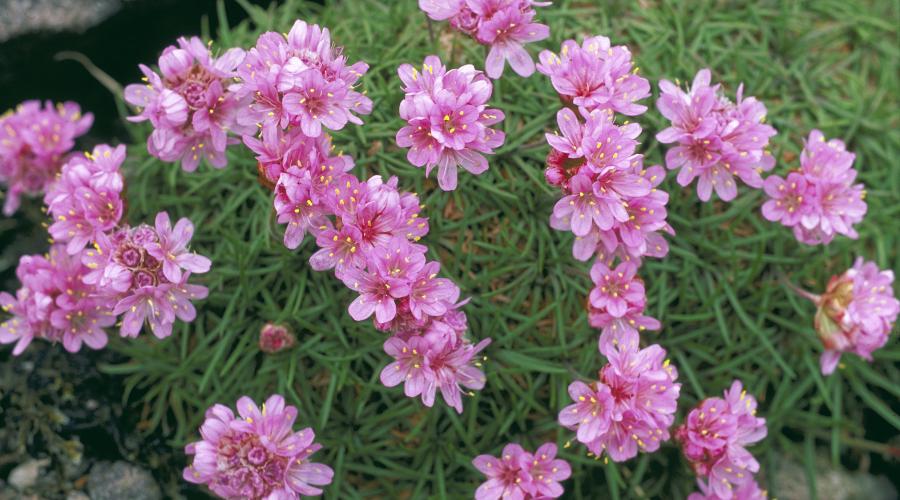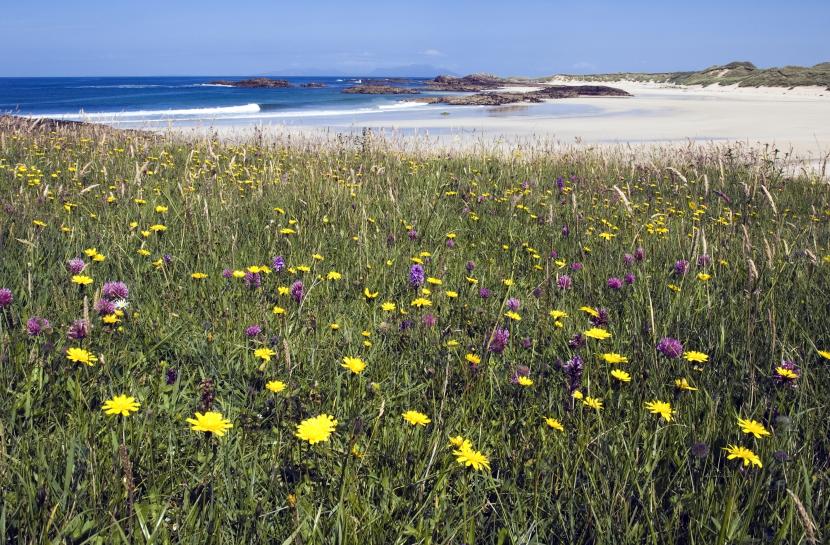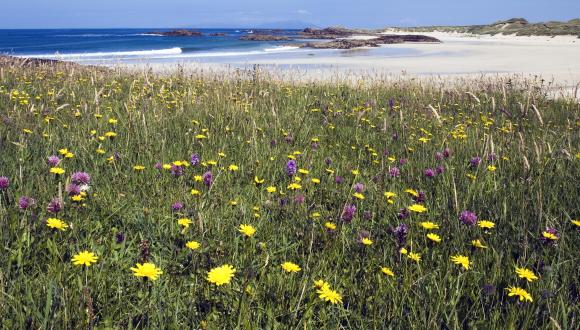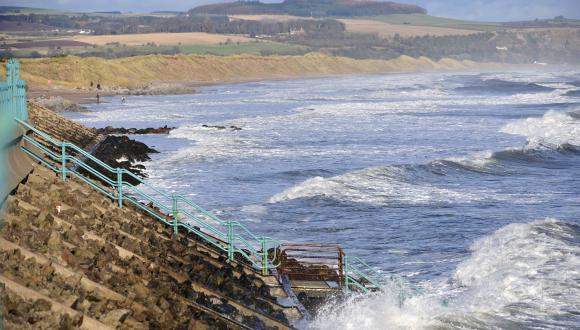
Coastal and marine plants
Coastal habitats suffer much of the worst of our climate, yet some plants tolerate or even demand such extreme weather.
Flowering plants help to stabilise coastal land and some provide spectacular displays of colour.
Many coastal habitats are marginal and have rock near the surface, which makes them difficult for humans to modify. As such, they’re often richer in flowering plants than other habitats that have been easier for us to use.
Grassland habitats on the coast – such as the machair of north-west Scotland – are often full of flowers.
Only one vascular plant has broken into the true marine environment: seagrass. But there are some plants such as the non-native cord-grasses which can grow on mud flats.

©Lorne Gill.
Threats to coastal plants
Soft habitats and big storms mean that coastal plants may be easily swept away. But many species that are lost, like the oysterplant, seem to find their way back. It’s likely their seeds are washed or blown in from elsewhere.
People compete with flowering plants for their coastal habitats, however, and coastal development has caused some plant populations to be lost forever.
Changes in land management can also cause losses. For example, reducing the grazing of flower-rich habitats may allow taller grasses and even scrub to take hold, blocking the sunlight from reaching smaller flowering plants.







